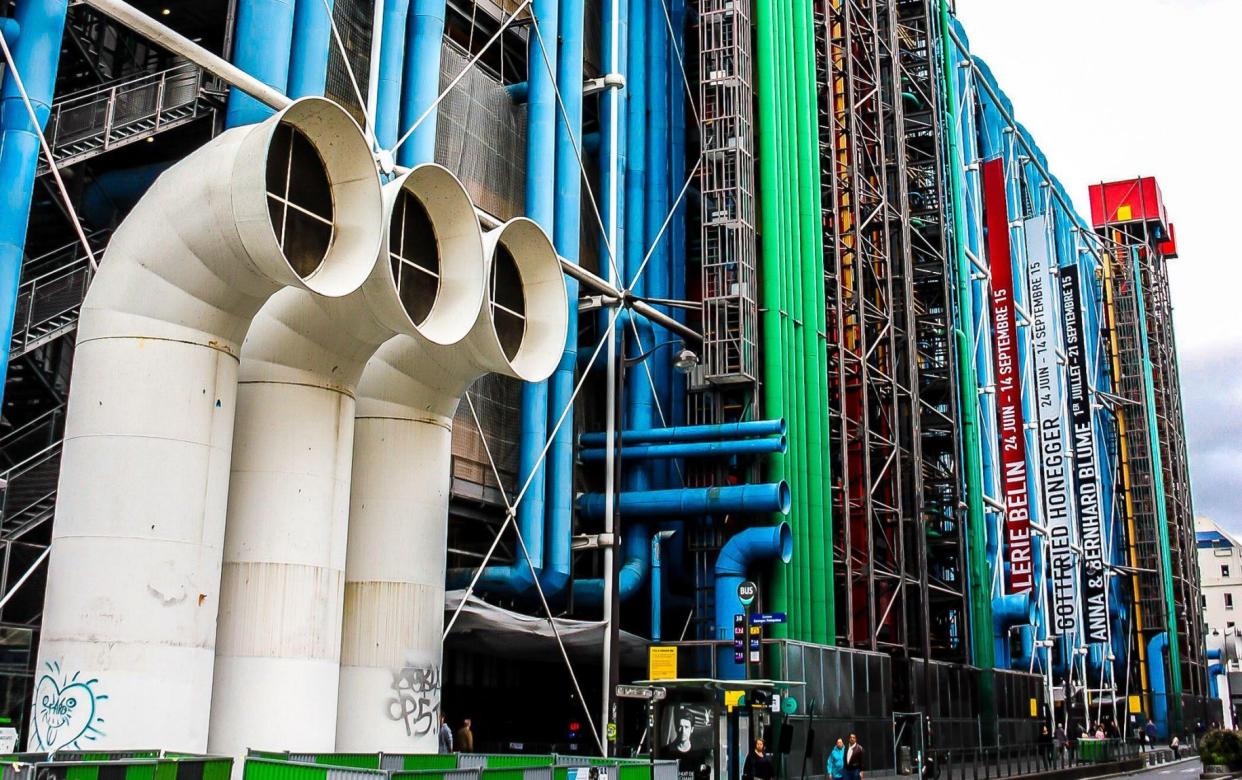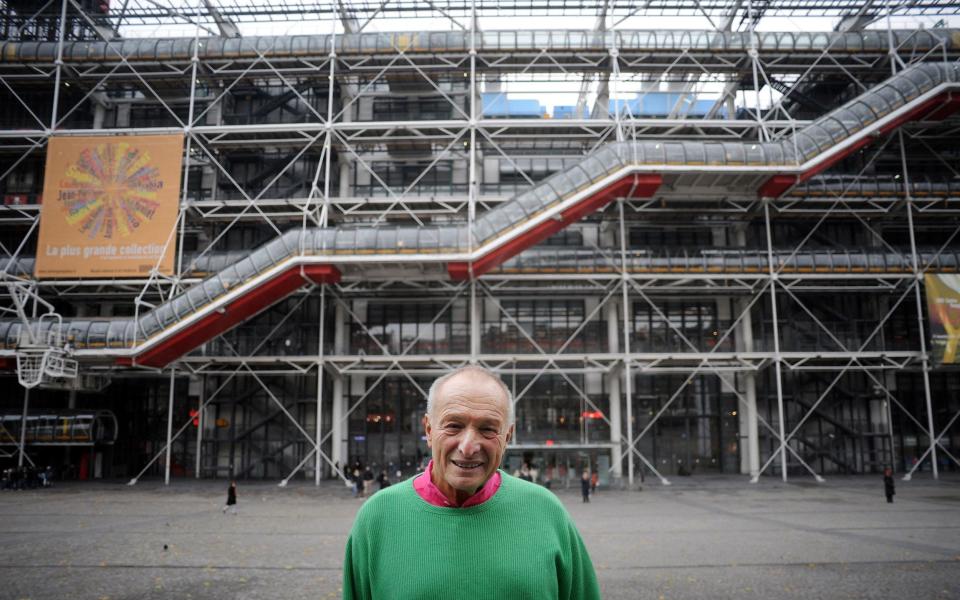‘Like the Loch Ness monster’: how Richard Rogers’s Pompidou Centre shocked Paris

- Oops!Something went wrong.Please try again later.
- Oops!Something went wrong.Please try again later.
- Oops!Something went wrong.Please try again later.
Soon after the opening of the Pompidou Centre in 1977, Richard Rogers, who died at the weekend aged 88, was standing outside, looking up at the spaghetti tangle of blue pipes that cascade down its facade. A small, elderly woman asked what he thought of the building. “I proudly told her I was the architect,” Rogers later recalled. “She paused, looked at me, and hit me over the head with her umbrella.”
Telling the story in his acceptance speech for the Pritzker Prize, 30 years later, Rogers got a big laugh. The audience knew what the young architect parrying blows on a rain-soaked Paris pavement could not: the deeply controversial arts centre would become one of the city’s most popular attractions, and launch stellar careers for both Rogers and his then partner, Renzo Piano.
At the time, though, the injury just added to a barrage of insults directed at the building throughout its painful six-year gestation. Rogers could remember only one positive newspaper piece in the entire period. Journalists strained to find unflattering comparators: “oil refinery”, “the Loch Ness Monster”, “architectural King Kong”. Under the headline “God, that is ugly!” in the Journal du Dimanche, the sci-fi writer René Barjavel suggested getting rid of the “preposterous shed” by gifting it to Idi Amin. “It was hell,” said Rogers later. “It was the most hated building ever.”
Much of the animus was down to the shocking novelty of the architecture, which shifted the building’s entrails to the outside in order to make open floors within, each the size of two football pitches. There was also fear that this alien interloper – which combined a new home for the Musée d’Art Moderne with a vast public library, a design centre and an institute of contemporary music – would destroy a neighbourhood in the 4th arrondissement.
As the brainchild of conservative president Georges Pompidou, who wanted a new type of cultural institution following the riots that had ripped through the capital in May 1968, the project was also innately political. Rogers himself was reluctant to enter the 1971 design competition, but was persuaded by colleagues including Piano and engineer Ted Happold of Ove Arup & Partners, which collaborated on their proposal.

The team proposed a “place for people” that would adapt to meet users’ needs. Floors could move up and down, and ad-hoc additions could clip on to an industrial-looking steel frame. Walkways and escalators would bring life to the front facade, and electronic screens would broadcast cultural content to a spacious piazza.
A month later, a call came with the astonishing news that Piano and Rogers – little-known and not French – had beaten 680 other entrants. What swung it for the jury, they would later learn, was functional flexibility, and the commitment to public space; theirs was the only entry to include a generous piazza.
The team set off for Paris that afternoon, arriving to find a buzz of anticipation. Plucked from the crowd at customs, they were swept off to be fêted at a white-tie banquet.
The honeymoon was brief. At a press conference the following morning the packed auditorium was hostile; one irate woman had to be removed by gendarmes. An audience with Pompidou at the Élysée Palace followed. According to Nathan Silver, a biographer of the building, the president seemed pleased to see Rogers wearing a denim suit favoured by French railway workers, and his assistant in a Mickey Mouse sweatshirt. This was evidence of the radical approach he wanted.
He gave a rousing speech, and left them in the hands of project manager Robert Bordaz. The civil servant had no experience of construction but had led the French evacuation after Dien Bien Phu in 1954 and had a grit that was to prove useful. Trouble started straight away. French architects took umbrage at a dismissal of “art for art’s sake” in Piano and Rogers’s competition statement and launched the first of seven lawsuits intended to derail the project.

Descendents of great artists made it clear that they did not consider the building a fitting place for the Musée d’Art Moderne, the home to work by Picasso, Matisse and Modigliani, and France’s leading modern art gallery. Sonia Delaunay had planned to give a collection of paintings to the museum, but announced that she would rather burn them.
The architects went on to guide the project through budget cuts and technical crises requiring major revisions. Out went the moving floors, and also the electronic screens which Pompidou’s successor, Valéry Giscard d’Estaing, thought could be used for propaganda. Through diplomacy and clever problem-solving, much of the original intent was preserved in the final outcome, but it was gruelling work.
However, the object of so much vituperation became an almost immediate popular success, drawing six million visitors in its first year, more than the Louvre and the Eiffel Tower combined. Rogers put that down to the French fondness for promenading: many people came simply to enjoy the public spaces, inside and out.
Not everything worked – fixed walls were soon added to galleries, and the ductwork weathered badly – but the Pompidou must be among the most important buildings of the century. It set new directions in architecture, informed every arts institution that followed, and, at a time when cities were in deep decline, made a powerful, seductive advertisement for the pleasures of urban life.

